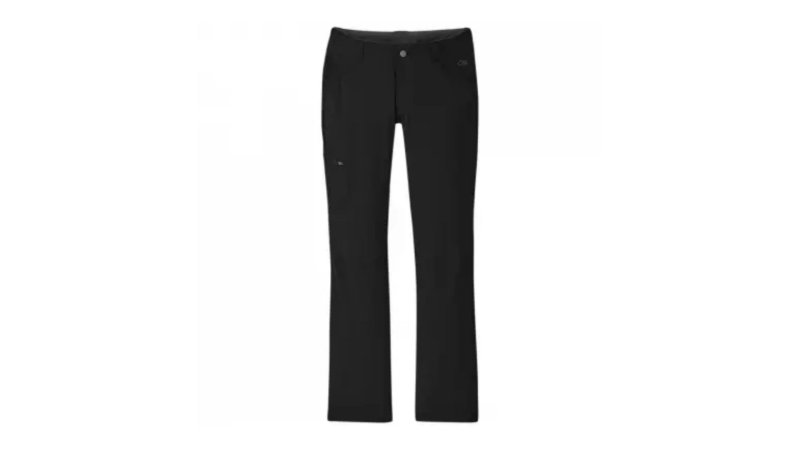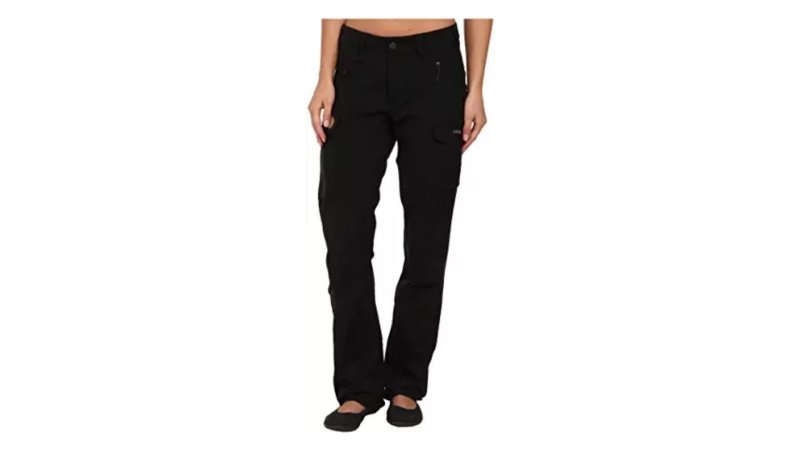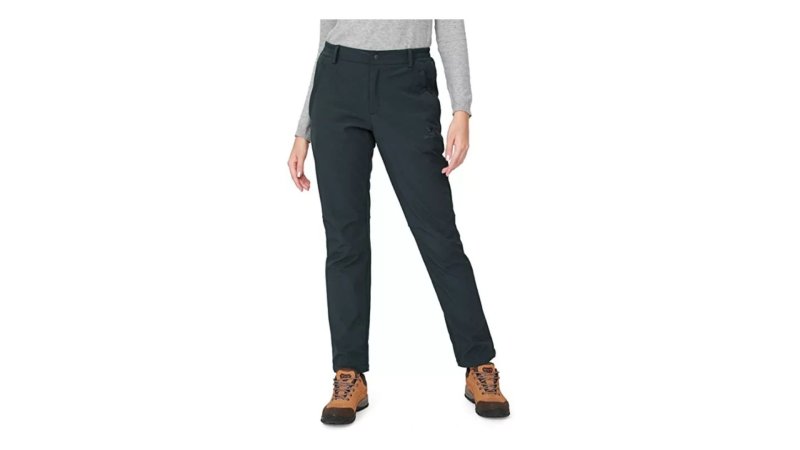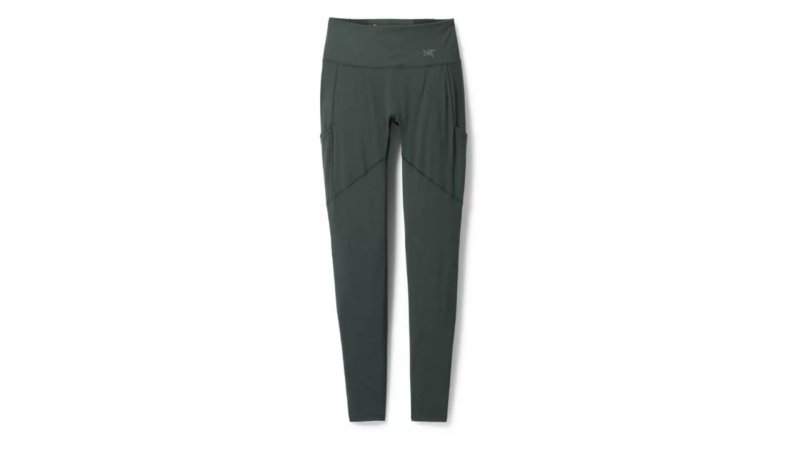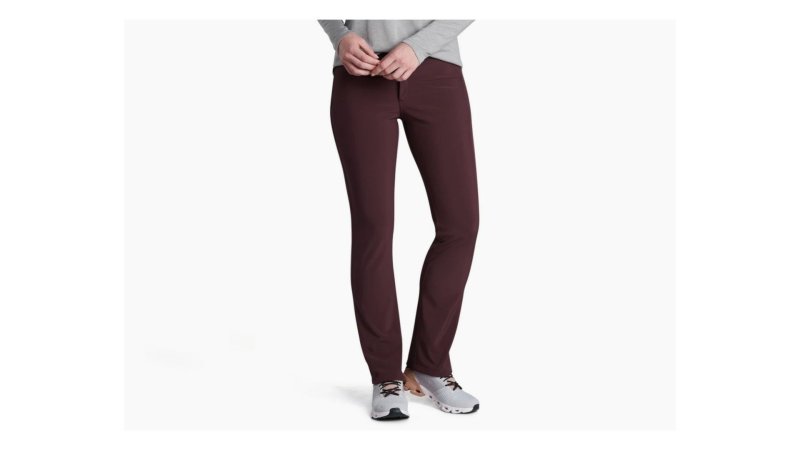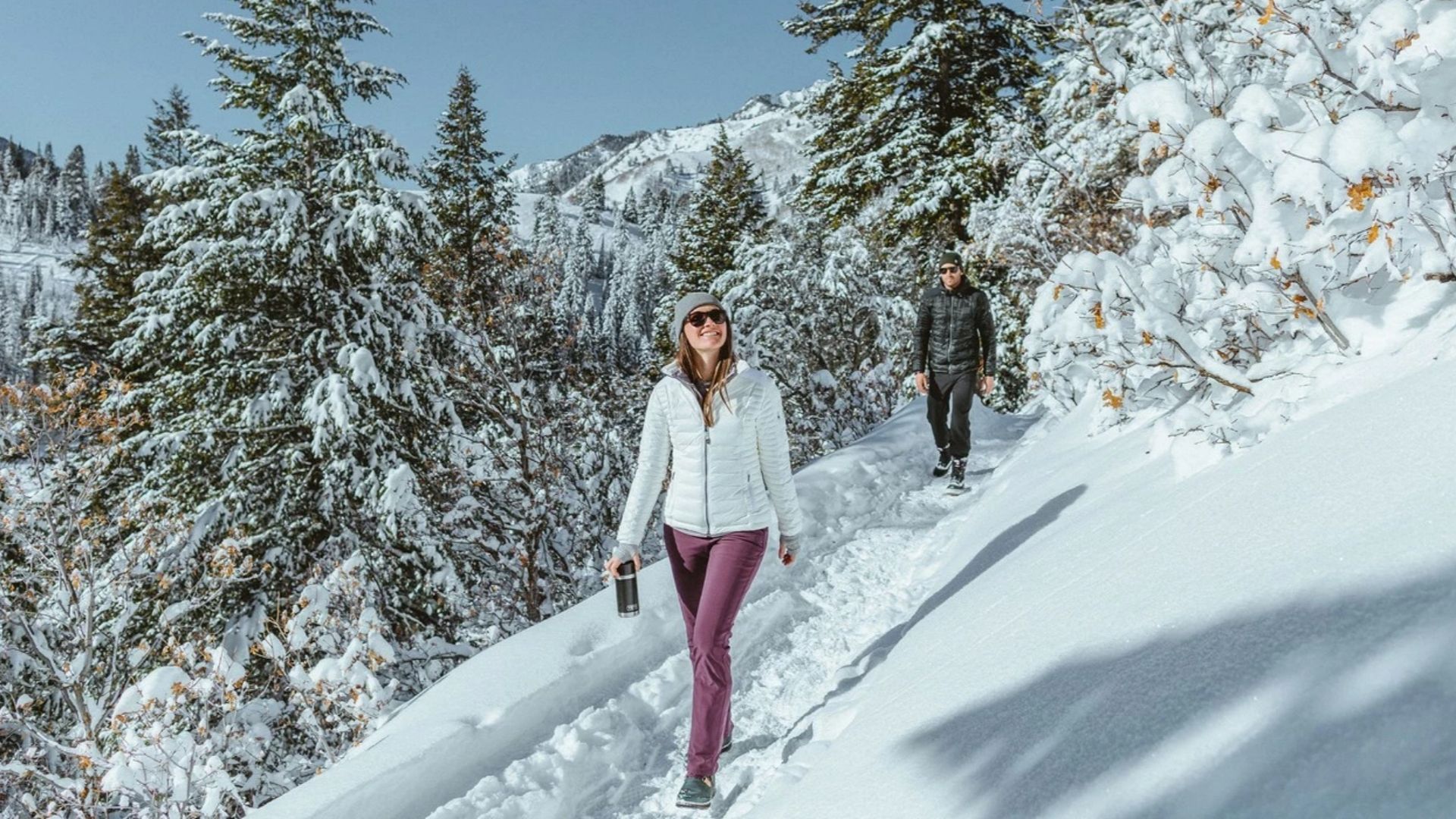

We may earn revenue from the products available on this page and participate in affiliate programs.
When Southern Maryland was hit by a freak January storm that dumped over a foot of cement-like wet snow, it was worth it to have a pair of the best hiking pants for women on hand to clean up all of the tree limbs that fell on our property. Despite the bitter cold, all I had to do was wear a base layer under my hiking pants (the same ones I wore to climb Mount Rainier) and pull on some gloves, a soft shell jacket, and the North Face Shellista IV tall snow boots I previously reviewed and I was good to go for several hours of intensive restoration work in the wet snow.
The fact is that, despite their moniker, a good pair of wind- and water-resistant hiking pants can be used for many more purposes than walking in the woods, making them a worthy and versatile addition to your outdoor clothing wardrobe. Worried about the work required to find a good pair? Never fear: We’ve done the research on the best hiking pants for women that don’t sacrifice form for function, so you can stay warm, dry, and look good on all of your adventures.
Best Overall
Patagonia Point Peak Trail Pants
Pros
- Affordable, stretchy, and durable
- Excellent water resistance
- Lightweight with room for a warming layer underneath
- Flat Velcro belt fits under hip belt for backpacking comfort
- Fairly size inclusive
- Drawstring ankle cord for additional ventilation
Cons
- Straight cut is not flattering for everyone
- Light weight fabric reduces warmth and wind resistance compared to other soft shell pants
- Only three color options, including a wretched brown
- Sit low on the waist making them drafty
Product Specs
- Freedom of movement: High fabric stretch content, knee darts, and crotch gusset, mean maximum mobility, whether rock climbing or hiking up steep hills
- Wind and water resistance: Recycled nylon cloth is treated with a water-resistant finish for comfort in wet weather and high winds
- Wicking and drying speed: Lightweight nylon fabric makes for superior breathability and wicking, leaving you cool and dry
- Pockets: Two angled zippered front pockets large enough to fit your entire hands, and two smaller rear zippered pockets suitable for smaller items
Best Value
Outdoor Research Ferrosi Pants
Pros
- Can’t beat the stretch and comfort
- Available in tall, regular, and short inseam lengths
- Size inclusive
- Supreme breathability make them a winner for summer activities
- Can’t beat the price for the quality
Cons
- Thin fabric means they lack wind resistance and are best for warm weather activities
- Roomy waist but snug through the thigh makes for problematic sizing
- A few more pockets would be nice
Product Specs
- Freedom of movement: Superior stretch means maximum reach and flexibility
- Wind and water resistance: Great at beating the rain, not so great at resisting wind
- Wicking and drying speed: Maximum breathability, optimal wicking, and quick drying
- Pockets: One side zip pocket won’t interfere with a climbing harness, small rear drop-ins
Editor’s Choice
Fjallraven Nikka Trousers
Pros
- Best looking hiking pant on the market
- Bursting with generously sized, well-placed pockets
- Highest quality fabric, design, and workmanship
- Exceptional tailoring with pre-shaped knees and rear and crotch gusset
- Available in curved and regular styles
Cons
- Very expensive
- Some won’t want to hem the legs
- Can be difficult to find the right size
- Learning curve for wax application
Product Specs
- Freedom of movement: Stretchy enough for serious trekking and tailored to ensure maximum mobility
- Wind and water resistance: Tight weave of recycled polyester repels rain and wind resistance like magic
- Wicking and drying speed: High polyester content quickly moves water away from the skin to keep you snug and dry
- Pockets: Has the most and biggest pockets of any brand out there for max utility
Best Budget Winter Hiking Pants
Camel Crown Soft Shell Outdoor Pants
Pros
- Excellent price at less than $40
- Share some styling elements of top brand pants
- High marks for comfort and stretch
- Offer solid water and wind resistance for short term activities
Cons
- Pockets are smallish and hard to access under the hipbelt of a backpack
- Run small, so sizing can be a challenge Doesn’t feel or sound like a quality soft shell fabric
- Doesn’t feel or sound like a quality soft shell fabric
- Not as stretchy or warm as many higher-priced options
- Interior fleece may actually hinder sweat wicking away from the skin, so you feel colder
Product Specs
- Freedom of movement: Knee darts, a crotch gusset, and polyester content make for good stretch and movement
- Wind and water resistance: High polyester and nylon thread count for good protection, but not water or wind proof
- Wicking and drying speed: Quality of interior fleece may impede wicking power, but overall good for shorter activities
- Pockets: Two smaller zippered hand pockets and one small zippered pocket in the rear
Best Women’s Hiking Tights
Arc’teryx Oriel Leggings
Pros
- Well-priced and versatile
- Offer maximum freedom of movement
- A great base layer thanks to their breathability
- Design makes them comfortable under a harness or backpack
- Two deep, thoughtfully placed thigh pockets
- The most durable leggings out there
- Numbered sizing for a better fit
Cons
- Not as rain- or wind-resistant as actual hiking pants
- Not as durable as most hiking pants
- Exposed crotch gusset and leg seaming compromise their style
Product Specs
- Freedom of movement: High waist, stretchy nylon and elastane fabric make for maximum sag free mobility
- Wind and water resistance: Layer under a rain shell for maximum wind and water resistance
- Wicking and drying speed: Nylon knit and mesh lined waistband rapidly move moisture away from the skin
- Pockets: Two fairly deep, thoughtfully placed pockets (great for leggings!)
Best Women’s Winter Pant for Hiking
Kuhl Frost Soft Shell Pant
Pros
- Size-inclusive and available in three inseam lengths
- High-quality fabric is soft but durable and very wind- and water-resistant
- High-quality fleece lining for exceptional warmth
- Wide, flat, wicking knit waistband for comfort under a backpack hipbelt
- Styling makes them an attractive casual and high performance winter trouser
- Zip openings on bottom hem accommodate most winter boots
Cons
- Expensive at just under $140
- Made for winter, so not as versatile as other options
- Snap closure doesn’t stay closed
- Seaming details on rear end of pants can chafe under a backpack
- Pockets are meh
- Low waist lacks interior drawstring for sizing micro adjustments
Product Specs
- Freedom of movement: High polyester and spandex thread content make for superior mobility
- Wind and water resistance: Bonded and treated fabric protects you from the elements even in the most severe environments
- Wicking and drying speed: Lightweight fabric has excellent wicking power to keep you warm and dry
- Pockets: Two smaller front zipper pockets and two shallow rear drop in pockets for limited storage
Why you should trust us
I am an outdoor fanatic, and the fun doesn’t stop for me when Old Man Winter shows his ugly face. Whether summiting 14,000-foot mountains or hiking through the snowy woods, I crave being in nature all year long. Professionally, I’ve also gutted countless military training exercises, including cold-weather training at the Marine Corps Mountain Warfare Training Center in Bridgeport, California.
Throughout all my experiences, I’ve learned that the quality of your gear can make or break an adventure. Well-constructed gear is mentally and physically worth every penny, but it doesn’t need to cost a pretty penny. Whether you are trying to find the best snow boots for women to keep your toesies warm or a way to stay toasty while sleeping during your fall and winter camping trips, I’ve learned the hard way that investing in the right clothing and gear is essential to comfort and fun in the wilderness.
Types of hiking pants for women
There are three basic types of hiking pants for women, but all of them are designed to protect your legs from the elements. Which type you prefer will most likely be influenced by your budget, the season in which you plan to hike, and the terrain. Hiking pants can shield your legs from bugs, brambles, the sun, rain, and the cold to varying degrees depending on the type, so choose your pants wisely. No matter what type of pants you prefer, look for options that fit close to the body with a good deal of stretch in the fabric, articulated knees, and a gusseted crotch for maximum freedom of movement through the backcountry.
Regular hiking pants
Don’t be fooled by the name “regular hiking pants.” They aren’t to be confused with regular pants like jeans made from materials that may not wick sweat and moisture from the skin. Hiking pants, a relatively recent innovation in the outdoor world, are specifically designed to be lightweight, breathable, and water-resistant. What we mean when we refer to regular hiking pants are those offering basic protection from the elements while also being stretchy, but won’t necessarily keep you warm during cold-weather activities. Regular hiking pants may have zip-off lower legs or roll up, and come in loose or tighter fits, as well as tall and petite lengths.
Softshell hiking pants
Softshell hiking pants provide the same benefits as a good pair of regular hiking pants in terms of protecting you from the elements, but they expand your range of comfort during chilly outdoor activities thanks to their marginally heavier weight and available brushed cloth lining for added warmth. Softshell hiking pants also tend to be slightly less form-fitting than regular hiking pants, making them ideal for wearing a base layer underneath. Like regular hiking pants, soft shell hiking pants are not waterproof but can be worn under hard shell rain pants for added protection from rain and snow.
Leggings
OK people, I have a confession to make. I am cheap when it comes to buying clothing for outdoor activities, which is pretty counterintuitive considering how much time I spend doing stuff outside. When I hike in the summer, I generally do so in the same shorts I wear for running, and during the winter, my go-to base layer staple are my running leggings, which I frequently wear under my softshell hiking pants for added warmth and wind protection. Because of their stretch, moisture-wicking power, and insulating ability, I am a huge believer in wearing leggings for hiking. Some companies have started making tights specifically for hiking that offer reinforced panels on the knees and rear end or made from abrasion-resistant fabric for greater durability and protection from rocks and thorns. Arc’teryx Oriel Leggings are a great example of a versatile legging that can take you from trail to rock wall with ease and minimum scrapes. In my book, the only thing regular hiking pants have on leggings is the depth and quantity of their pockets, which sadly, leggings tend to lack.
Key features of hiking pants for women
Stretch
Perhaps the most important characteristic to consider when shopping for hiking pants, stretchy fabric can increase your range of motion and tends to be gentler on the skin. No matter what activity you plan to pursue in your hiking pants, the higher the elastic content, the greater your freedom of movement, so when shopping, look for pant material with at least 5 percent spandex. If you plan on purchasing hiking pants with reinforced, heavyweight material in the knees and seat, ensure you look for pants like the Fjallraven Nikka Trousers with stretchy panels on the sides and rear of the legs for maximum mobility and protection from everything the trail might throw at you.
Breathability and dry time
Wet fabric that doesn’t dry quickly can not only weigh you down, but will also chill you since wet cloth steals heat away from your body and can cause hypothermia even in relatively warm temperatures. Fabrics that wick actually draw sweat and moisture away from the skin through small holes, allowing the material to dry quickly and helping you to stay cool and better regulate your body temperature. Outdoor activity naturally involves movement and perspiration, which means buying hiking pants made from quick-drying, breathable fabric will be essential to your comfort and heat regulation, no matter the season. Look for pants with a high nylon, wool, or polyester content for maximum breathability and wicking. Zippered leg vents can also help move moisture away from your body quickly and reduce the drying time for your hiking pants.
Articulated knees and gusseted crotch
Since being outdoors implies movement and hiking pants can be worn for a variety of activities, the worst thing you can do when shopping for hiking pants is overlook the importance of articulated knees and crotch gusseting. Pants with articulated knees have strategic darts in the knee fabric that mimic a slightly bent leg, even when laid out flat. The point of this clever sewing hack is to maximize freedom of movement, particularly when big steps up are required.
Crotch gusseting involves sewing a diamond-shaped piece of fabric into the seat of hiking pants. While typically overlooked in women’s athletic attire, crotch gusseting has long been favored by male hikers because it prevents chafing from seams and gives you just enough extra fabric in your seat to ensure full freedom of movement. And let’s face it, if it’s good enough for Chuck Norris, it’s good enough for you.
Wind and water resistance
Many manufacturers coat their hiking pants with a waxy coating to increase water and water resistance. Essentially, the coating fills in the gaps in the fibers of the cloth to prevent air and water penetration. Even if you have no plans to hike through nasty weather, look for pants that have been treated with a durable water repellent (DWR), because you never know when a freak thunderstorm will occur, and the last thing you need in the wilderness is to go hypothermic because you are wet to the bone. While a DWR coating stiffens hiking pants fabric and must be reapplied over time to maintain water resistance, the application process is relatively simple, involving spraying it on the fabric or rubbing a bar of wax on the fabric and then ironing over it. The best part? Many consumer-applied DWR options are all-natural and are made of beeswax and paraffin, which means you can really get close to nature when wearing your hiking pants.
Benefits of hiking pants for women
Skin protection
Let’s face it, outdoor activity involves a certain degree of risk of personal injury. To maximize your fun, it’s smart to take precautions when you can, and investing in a good pair of hiking pants is a great way to prolong your enjoyment in the backcountry. Hiking pants can protect your skin from elements and some, like ExOfficio’s BugsAway Vianna Pants, even come with added UV and insect protection. If you’ve ever had to deviate from a trail in the woods due to a downed tree or impassable stream, you know how important pants are for protecting the skin on your legs from bugs, brambles, and sharp sticks. Reducing cuts and abrasions to the legs is especially important for long trips in the woods when it’s harder to keep wounds clean.
Maximum freedom of movement
When I am out in the backcountry, I will occasionally see novice hikers wearing expressions of pain on their faces as they move past me wearing jeans. I can only imagine what the stiff fabric and heavy seams of their pants are doing to their skin. The simple fact is that if you are going to enjoy your outdoor activity, you need to be able to reach, bend, and stretch, and hiking pants are designed to allow you maximum freedom of movement while protecting you from the elements and chafing at the same time. In addition to being made of stretchy, breathable fabric, a good pair of hiking pants may also have special darts at the knees to help you bend and go uphill with ease and crotch gussets to aid mobility and prevent chafing.
Versatility
Because a good pair of hiking pants will be somewhat form-fitting but stretchy, you won’t believe the number of activities they can be worn comfortably for. I invested in an inexpensive pair made by REI a few years ago, and have worn them on rock climbing, mountaineering, and hiking trips. You can also extend the versatility of your hiking pants by wearing a base layer underneath them for added protection from the cold and wind. Although I tend not to wear athletic attire when out and about, many manufacturers make women’s hiking pants that are both functional and fashionable, making them an option for both a walk in the woods or a trip to your favorite coffee shop.
Pricing considerations for hiking pants for women
Budget
Although I do believe it’s possible to find well-priced outdoor clothing that performs well, you will be hard-pressed to find a good pair of off-brand hiking pants that will shed water and keep you warm for less than $40, although as Outdoor Research’s Ferrosi pants demonstrate, once in a while we can find that elusive purple unicorn. The fact is that many budget-priced hiking pant options will lack crotch gussets and knee darts, making these pants less functional and restricting your movement. They will also probably lack quality stitching and materials and won’t stand up as well as higher-priced options. But if you only hike once in a while, spending more may not make sense to you. Just having a cheap pair of water-repellant and wind-resistant trousers in your backpack should have you covered.
However, if you do want a higher-end product, note that buying at the end of the season can be a great way to spot high-quality, name-brand options with all of the bells and whistles but within a budget price range.
Mid-tier
There is something to be said for buying clothing from known and respected brands, particularly when that clothing can mean the difference between life and death, even if you only hike once in a while. And make no mistake, quality water- and wind-resistant hiking pants can not only mean the difference between being comfortable or uncomfortable on your outdoor adventures, but can also literally prevent you from going hypothermic when the temperature suddenly drops and a sudden storm appears out of nowhere.
When it comes to prolonging my life, I am comfortable paying more for clothing from respected companies because I know they pioneer technological advancements for outdoor clothing and understand how their gear relates to my survival. The good news is that if you are willing to spend between $50-$99, your options for highly rated regular hiking pants and leggings from respected manufacturers will expand significantly, so making a good decision doesn’t mean breaking the bank.
Premium
My adventure partner and I are four-season hikers, and after experiencing the misery of crappy cold weather gear in the Marine Corps for 20 years, we strongly believe in investing in quality clothing to prolong our enjoyment and comfort on our trips. Bottom line: If you are active in the mountains all year like us and you want to preserve your relationship on hikes that feel more like slogs, sometimes spending more for premium products is just the thing.
If you are serious about your safety and comfort in all seasons and are willing to spend more than $100 for your hiking pants, you will absolutely be amazed at the difference in durability, comfort, fit, and thoughtful design when compared to budget options. There is a reason that guide services pay more for tried and true gear from companies like Mountain Hardware, Fjallraven, and Patagonia for their guides. The investment is about the very survival of their people, and if that is good enough for them, it’s definitely good enough for me.
How we chose our top picks
Unlike in my review of the best running shorts for women, when reviewing different hiking pants for women for this piece, price took more of a back seat to the quality of the pants and their materials. After all, your running shorts will rarely mean the difference between life or death, but your hiking pants impact not only your comfort and enjoyment, but can also prevent you from sliding into hypothermia and even death when the weather turns unexpectedly bad on you. While there are a lot of cheap, non-name brand options for women’s hiking pants on sites like Amazon, we aren’t fooled when the description says they are waterproof.
Because of the impact a good pair of hiking pants can have on your safety, how well the pants I reviewed can protect you from the elements was first and foremost in my mind. Other than the one budget winter pair we highlight here that are good enough for occasional, good weather hikers, we did not review products that promised to be waterproof. Instead, my top picks were based on weather resistance, wicking power, design, and durability. Usable pockets got extra stars since women’s pants tend to lack them.
FAQs on hiking pants for women
You’ve got questions, Task & Purpose has answers.
Q. What’s the best fabric for hiking pants for women?
A: Freedom of movement is essential, which means you should look for hiking pants with a high nylon and elastic content. The beauty is that these materials are not only stretchy, but they are also breathable, moisture-wicking, and can also help you regulate your body temperature.
Q. What extra features of hiking pants for women do you need?
A: Pockets, pockets, and more pockets. Seriously, hiking pants need to be functional, but to maximize your comfort, look for pants with zippers for venting, a built-in belt or loops, a gusseted crotch, and articulated knees.
Q. Do I need hiking pants, outdoor pants, functional pants, or trekking pants?
A: Good question with a simple answer: A good pair of hiking pants can serve many purposes, including hiking, climbing, and mountaineering.
Q. What insulation should my hiking pants have?
A: It depends on what activities you have planned. If you are doing things in the winter, softshell pants often come with a fleece lining to help insulate you. The beauty of hiking pants is that base layers can be worn underneath for added protection from the cold.
Q. How do waterproof finishes differ for hiking pants?
A: There is no such thing as waterproof clothing. Exposure to the elements and washing will diminish the amount of water resistance your outdoor clothing provides. The good news is that you can restore their water resistance between washes by applying beeswax or water resistance sprays.
Q. What practical details should hiking pants have?
A: If you want pants that will offer maximum mobility without dragging you down, look for hiking trousers made from stretchy nylon fabric with leg zippers for venting, crotch gusseting, articulated knee darts. Nylon fabric will help move moisture away from your skin to keep you warm and dry while gussets and knee darts will ensure you can move through the most challenging terrain with ease.
Q. What hiking pants should I wear in the summer?
A: Unless I plan to go bushwacking, I tend to wear running shorts but always carry my Patagonia Torrentshell 3L Pants for rain and wind protection and an extra layer of warmth in a pinch. However, quick-drying, lightweight Outdoor Research Ferrosi Pants are an excellent option for summer hikes, and have an elastic cinch cord at the cuff for additional venting and breathability.
Our gear section
Kate Germano served in the Marine Corps from 1996 to 2016. She’s a closet gear freak who enjoys schlepping packs with her better half on long Appalachian Trail section hikes. She’s also into true crime, Qwirkle tournaments, and animals, but definitely not Dungeons and Dragons.

